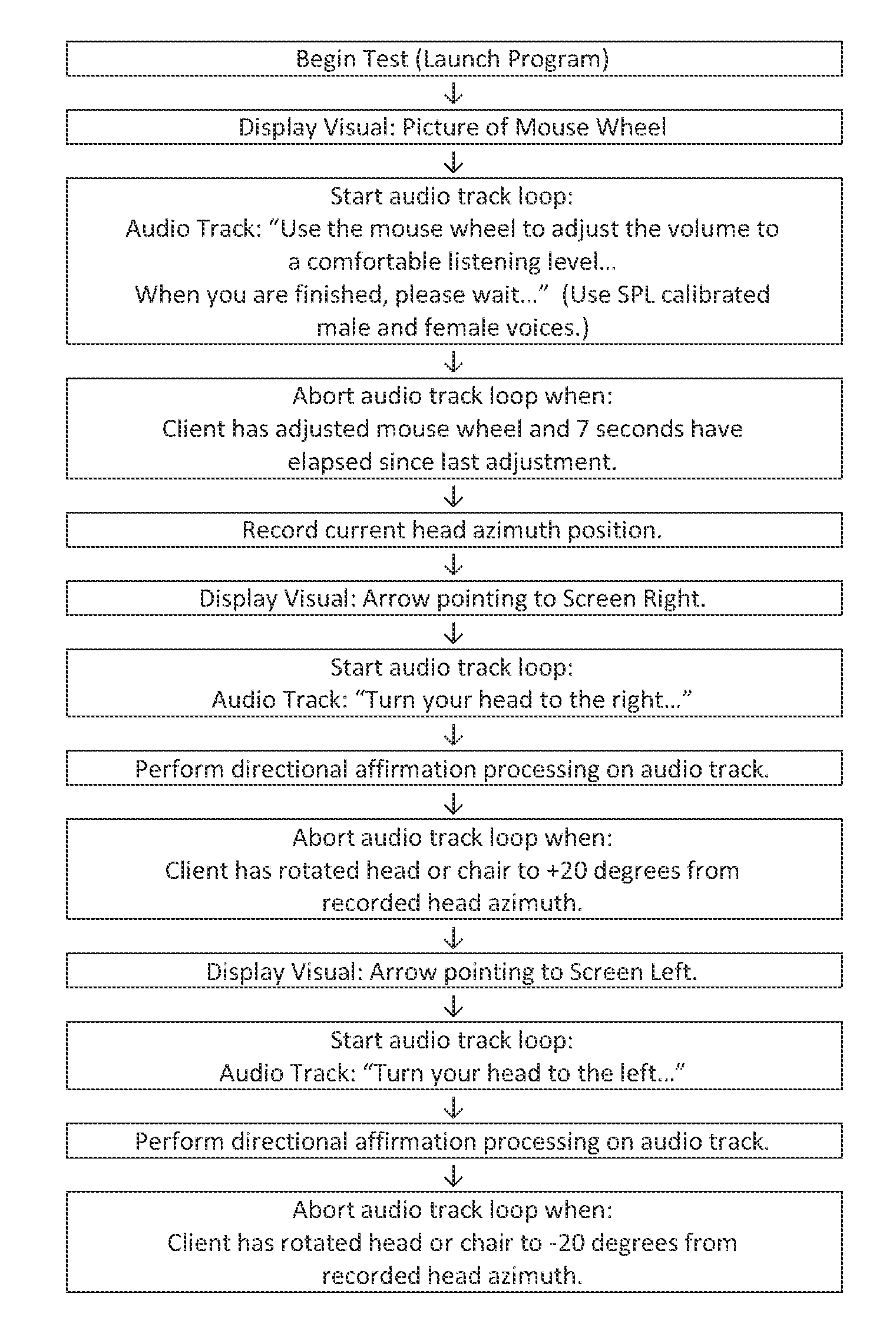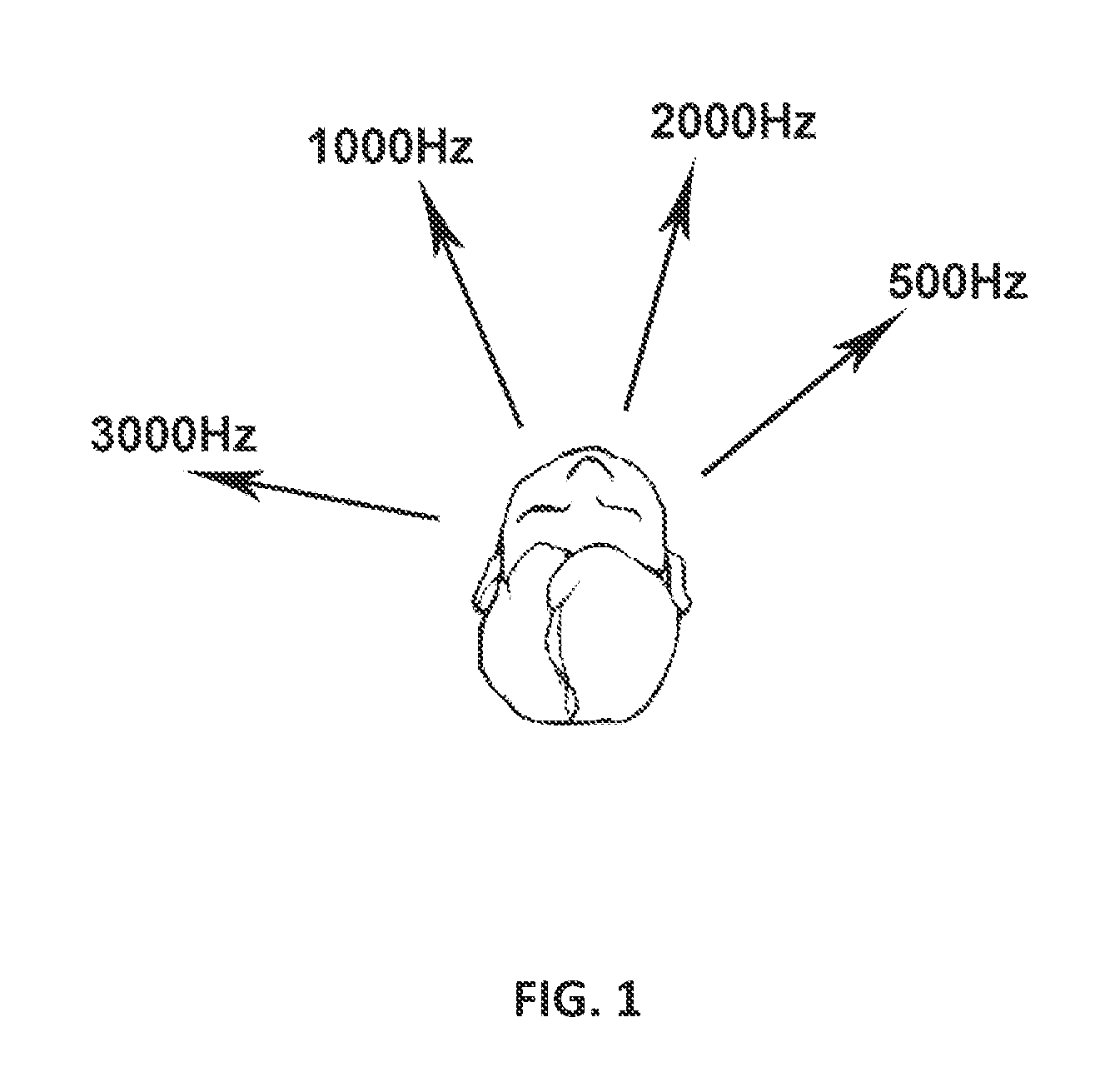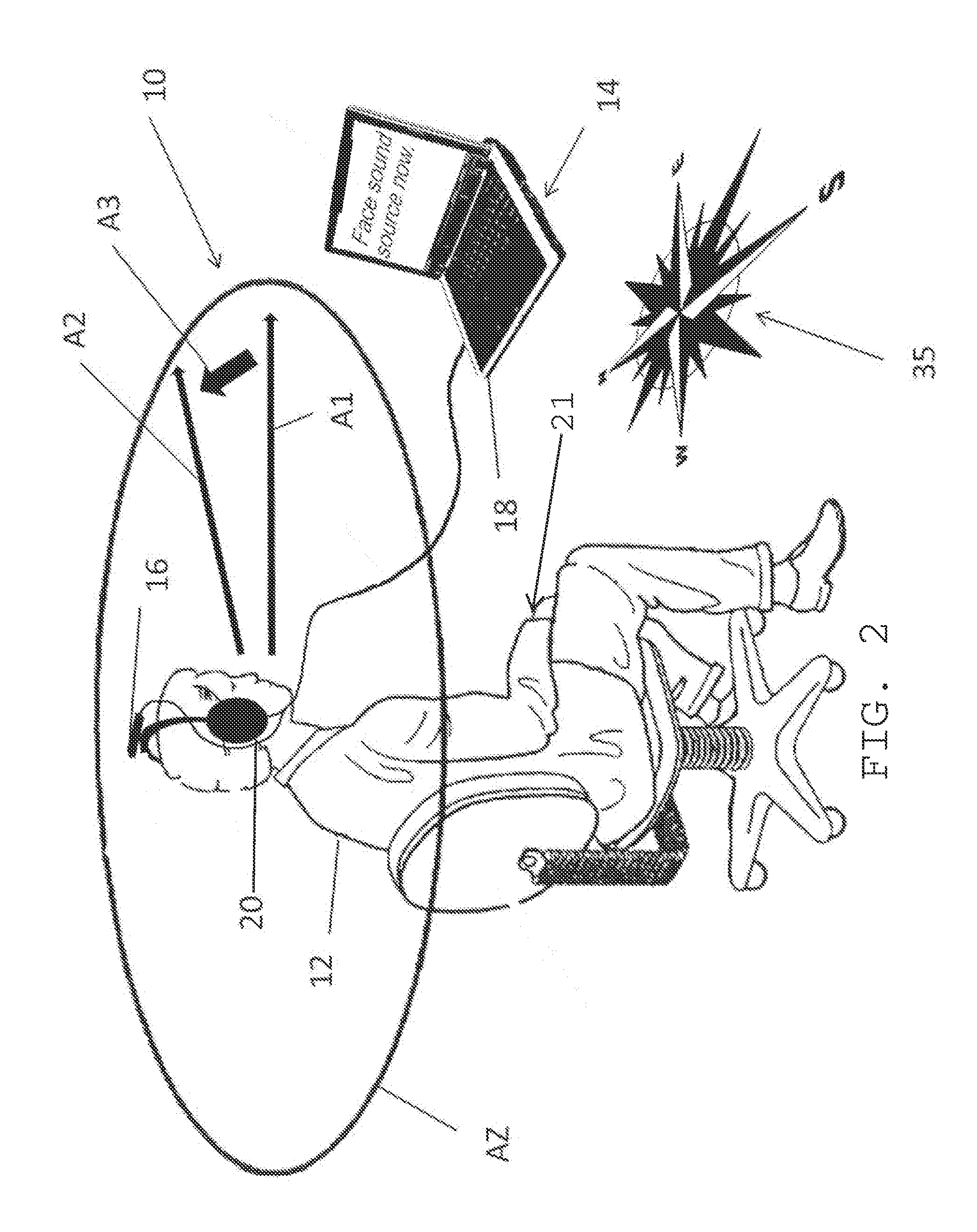Method of deriving individualized gain compensation curves for hearing aid fitting
a technology of gain compensation curve and hearing aid, which is applied in the field of individual gain compensation curve for digital hearing aids, can solve the problems of reducing the ability to perceive sound direction, using hearing aids, and further reducing sound direction perception, so as to reduce the fatigue of eventual patient testing, increase data collection, and limit the testing time period
- Summary
- Abstract
- Description
- Claims
- Application Information
AI Technical Summary
Benefits of technology
Problems solved by technology
Method used
Image
Examples
Embodiment Construction
[0066]The following data collection strategies and dataflow diagrams show how . near instantaneous head azimuth detection and measurement for instinctual sound direction affirmation in the fitting process provides means and methods to significantly increase data collection within a specified testing time period. The strategies are provided in the context of a total test time target. FIG. 1 represents one individual's uncorrelated binaural directional perception resulting from asymmetrical hearing loss and / or asymmetrical hearing aid acoustic fitting. This is a primary cause for the increased signal-to-noise overhead requirement for the hearing impaired for correct sentence understanding in a noisy environment. The uncorrelated binaural direction perception is a function of both frequency and SPL.
[0067]FIG. 2 illustrates a hearing aid fitting system, generally indicated at 10 in accordance with the principles of the present invention. An assessment of sound direction perception of an...
PUM
 Login to View More
Login to View More Abstract
Description
Claims
Application Information
 Login to View More
Login to View More - R&D
- Intellectual Property
- Life Sciences
- Materials
- Tech Scout
- Unparalleled Data Quality
- Higher Quality Content
- 60% Fewer Hallucinations
Browse by: Latest US Patents, China's latest patents, Technical Efficacy Thesaurus, Application Domain, Technology Topic, Popular Technical Reports.
© 2025 PatSnap. All rights reserved.Legal|Privacy policy|Modern Slavery Act Transparency Statement|Sitemap|About US| Contact US: help@patsnap.com



